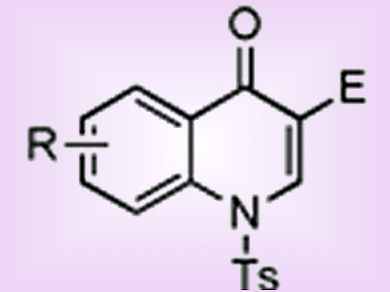Since the discovery of the antibiotic nalidixic acid, 3-carboxy-4-quinolones have become attractive targets for synthetic and medicinal chemists. These therapeutic quinolones are not modeled on any natural products and they are entirely of synthetic origin. Despite the interesting medicinal activities of quinolones, especially 3-carboxy-4-quinolones, relatively few methods are available for the synthesis of quinolone cores.
In light of their previous studies into phosphine catalysis as a means of providing access to 3-substituted and 3,4-disubstituted quinolines, San Khong and Ohyun Kwon, University of California–Los Angeles, USA, have devised a new method for rapidly accessing 4-quinolone-3-carboxylates and 3-aroyl-4-quinolones from activated acetylenes, S-phenyl 2-(N-tosylamido)benzothioates, and catalytic (10 mol %) Ph3P in acetonitrile, either at room temperature or with microwave-assisted heating. The reaction occurs through general base catalysis, initiated upon nucleophilic addition of Ph3P to the activated acetylene.
This operationally simple reaction appears well suited for use in the synthesis of quinolone antibiotics.
- Phosphine-Initiated General-Base-Catalyzed Quinolone Synthesis,
San Khong, Ohyun Kwon,
Asian J. Org. Chem. 2014, 3, 453–457.
DOI: 10.1002/ajoc.201402039




